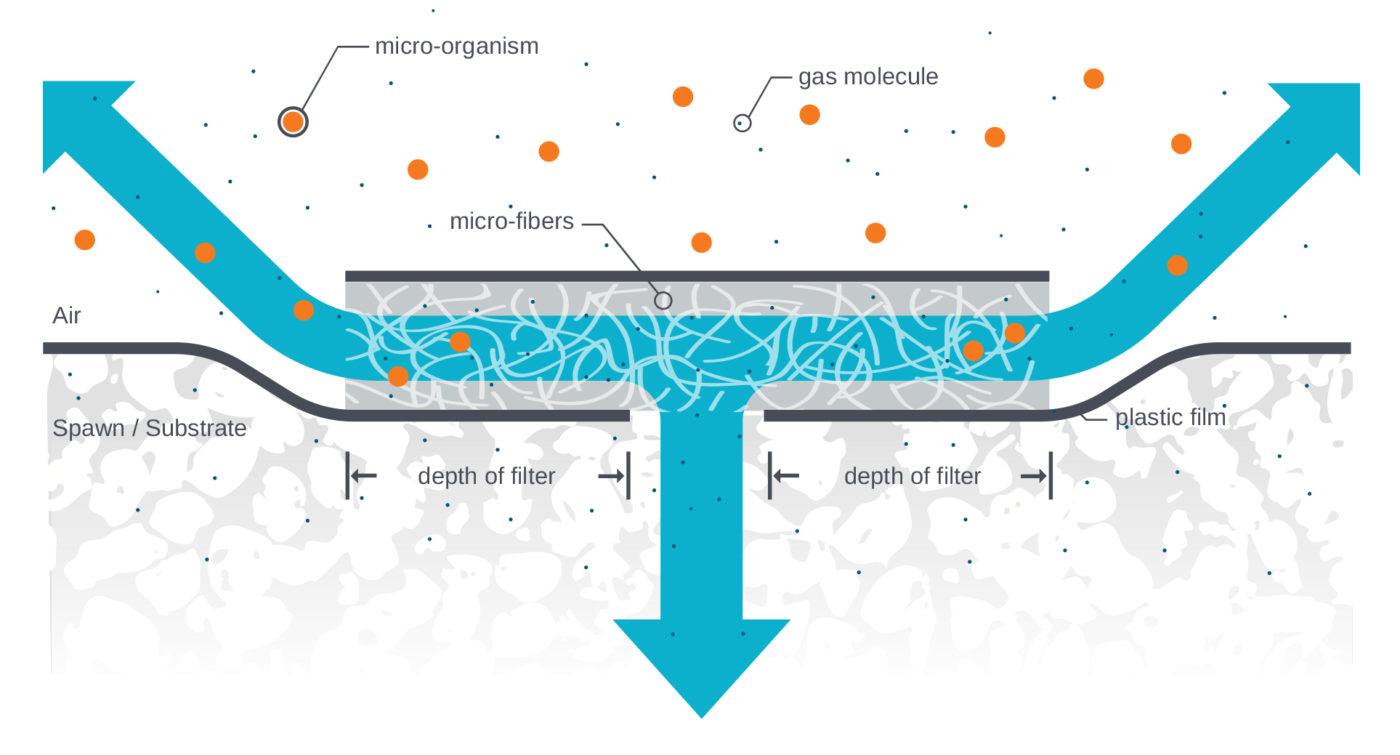Operating Principle
Operating Principle of the Microsac Filter
This revolutionary depth-filtration system allows for air flow, but blocks contamination, providing the best available protection against pests
and diseases.

The Microsac seams are unique because of depth filtration. As opposed to conventional spawn and substrate bags that use surface filtration, microsac filters guarantee a much more even and efficient gas exchange. While surface filtration relies on microperforation, Microsac filters are composed of randomly arranged fibres in which microorganisms get trapped, much like the HEPA-filter system. This allows a fluent gas exchange without a drying-out zone below the filters, while still forming a firm barrier against microorganisms.
The Full-Gas Microsac is provided with a series of parallel filter seams. Each seam consists of a double row of miniscule filter plugs, comparable to tiny wads of hydrophobic cotton wool. The level of gas exchange and the number of filters depends on the application: mother spawn, spawn, substrate, etc.
